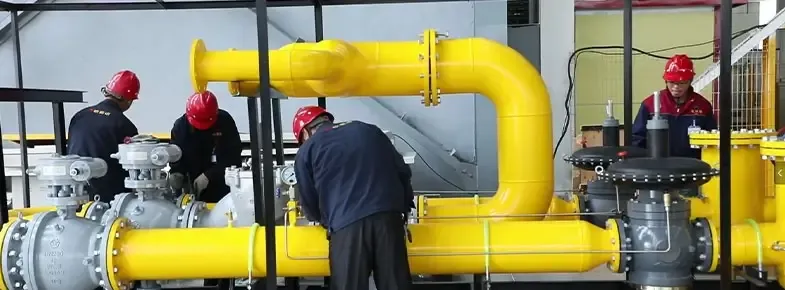
Dec . 17, 2024 00:54
Back to list
pressure reducing valve
Pressure Reducing Valve An Essential Component in Fluid Control Systems
In a variety of industries, pressure management is crucial for the safe and efficient operation of machinery and processes. One of the key components used to ensure proper pressure levels is the pressure reducing valve (PRV). This device is designed to automatically decrease the pressure of a fluid, ensuring that it remains within a predefined range. This article explores the importance, working principles, applications, and maintenance of pressure reducing valves.
Importance of Pressure Reducing Valves
Pressure reducing valves play a fundamental role in fluid control systems. Excessive pressure can lead to damage in pipelines, equipment, and other infrastructure, resulting in costly repairs and downtime. By regulating the pressure that enters various systems, PRVs help enhance the longevity and efficiency of machinery. In addition, maintaining appropriate pressure levels is essential for safety. High pressures can cause failures that threaten the safety of personnel and surrounding environments.
Working Principles
PRVs typically operate on a simple yet effective principle they reduce the input pressure to a specified output pressure by adjusting the flow of fluid. Most commonly, PRVs utilize a diaphragm or piston mechanism to achieve this. When the incoming fluid pressure rises above the preset level, the diaphragm or piston is pushed upward, which then allows the fluid to exit the valve and bypass back into the system, effectively lowering the downstream pressure.
The adjustment of the valve can usually be done via a spring-loaded mechanism, which can be calibrated to the desired pressure. This adjustment is critical because different applications may require different pressures. For example, residential water systems generally operate at lower pressures compared to industrial steam systems.
Applications
pressure reducing valve

Pressure reducing valves are used in a diverse range of applications across many industries. In residential settings, they regulate water pressure to ensure safe and comfortable domestic usage. In commercial buildings, they maintain consistent water supply pressure for heating and cooling systems.
In industrial environments, PRVs are vital in processes involving steam, gas, and liquid flow control. They are used in power plants, chemical manufacturing, and food processing, where precise pressure control is essential for operational efficiency and product quality.
Moreover, pressure reducing valves are critical in the oil and gas industry, where they manage pressures in pipelines to optimize transport efficiency and prevent ruptures. In pharmaceuticals, PRVs ensure that sensitive processes operate within safe pressure parameters, safeguarding product integrity.
Maintenance
To ensure optimal performance, regular maintenance of pressure reducing valves is essential. This can include routine inspections, cleaning, and recalibrating the valve to ensure it maintains the right pressure. Over time, mineral deposits, dirt, and other contaminants can build up within the valve, which may impair its functionality.
Operators should also be vigilant for signs of wear and tear, such as leaks or erratic pressure readings. Addressing these issues promptly can prevent more significant problems down the line. Moreover, whenever the system is modified or upgraded, it is crucial to reassess the specifications of the PRV to ensure that it continues to meet the operational demands.
Conclusion
In summary, pressure reducing valves are indispensable devices that contribute significantly to the safety and efficiency of fluid control systems. Through careful regulation of pressure, they prevent equipment damage, ensure safe operation, and optimize process efficiency. Their applications span a wide array of industries, making them a vital component in both residential and industrial settings. Regular maintenance is crucial to ensure that these valves function effectively, highlighting the importance of attention to detail in the management of fluid systems. As industries continue to evolve, the role of pressure reducing valves will remain critical in supporting innovative solutions for fluid control and pressure management.
Next:
Latest news
-
Safety Valve Spring-Loaded Design Overpressure ProtectionNewsJul.25,2025
-
Precision Voltage Regulator AC5 Accuracy Grade PerformanceNewsJul.25,2025
-
Natural Gas Pressure Regulating Skid Industrial Pipeline ApplicationsNewsJul.25,2025
-
Natural Gas Filter Stainless Steel Mesh Element DesignNewsJul.25,2025
-
Gas Pressure Regulator Valve Direct-Acting Spring-Loaded DesignNewsJul.25,2025
-
Decompression Equipment Multi-Stage Heat Exchange System DesignNewsJul.25,2025

